The most annoying fighter cliches (that we still totally love)
Haven't we beaten you up before?
Fighting tournament tropes
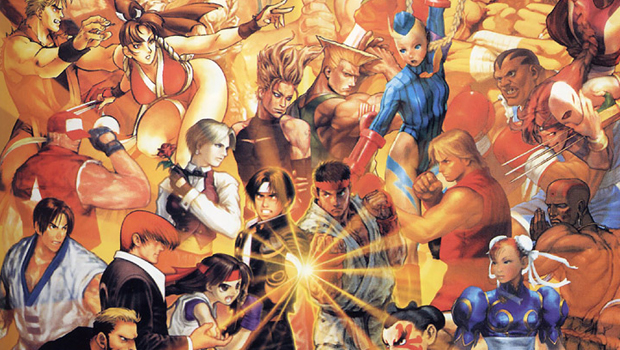
Now wait just a minute. We're not ready, and you better not yell "Fight!" just yet. Haven't we seen this before? No, not the fact that we're about to beat each other up for the enjoyment of onlookers, with round breaks in between--that's a given. It's just that this all seems very familiar...like some sort of cliche we've seen in fighting games time and time again.
Whether 2D or 3D, hand-to-hand or with weapons, fighting games seems to run into the same combat conventions from game to game. But no matter how many times our favorite pugilists retread the same battleground, we can't help but love their tournament-oriented tendencies. These are the fighting game cliches we have to beat down over and over--but no matter how many times they go down for the count, they'll always spring back up for another round.
Different roster, same played-out archetypes

What is it: The stoic everyman. The slow, burly tough guy. The plucky, lithe girl. The buxom vixen. An absurdly stretchy and/or long-limbed fighter. These are but a few of the typical prototypes youll find time and again throughout any fighter since the dawn of time (with the possible exception of the horrendous 3D Ballz). Its not that all character designers are creatively bankrupt--its just that constantly churning out new ideas for what a brawler should look like gets trickier as time goes on. That, and some developers are content to just crank out lame characters that are, in essence, wholesale rip-offs of their competitors rosters.
Why we love it: Having familiar archetypes to choose from makes transitioning from game to game that much easier. Not every character has to be some innovative weirdo--that would only make the characters who are different that much less unique. For every mundane carbon copy character, there are a bunch of divergent concepts. Voldo, Shun Di, Zappa, Miss Fortune--none of them would feel so special if it wasnt for average joes like Ryu and Kyo.
Here comes a new challenger!

What is it: With a suddenness bordering on jump-scare, fighters have always made a big honking deal about the arrival of a second player. Were you in the middle of a tough fight against an AI opponent? Did you literally just plunk your quarter into the machine, and have yet to select a character? Well drop everything, because you now have no choice but to accept a duel from a complete stranger. Bonus points for those games that usher in the abrupt challenge with a catchy little ditty, like the musical prelude to a brutal beating.
Why we love it: No self-respecting fighting game player would be content battling the computer all day long. Fighters are at their best when theyre matching wits and reflexes with a human opponent--one with an adaptive mind, habits, and imperfections. So it should be a big deal when one shows up; essentially, the game is telling you to snap out of your AI-lulled daze, because the real fight is about to begin.
Insanely long super animations
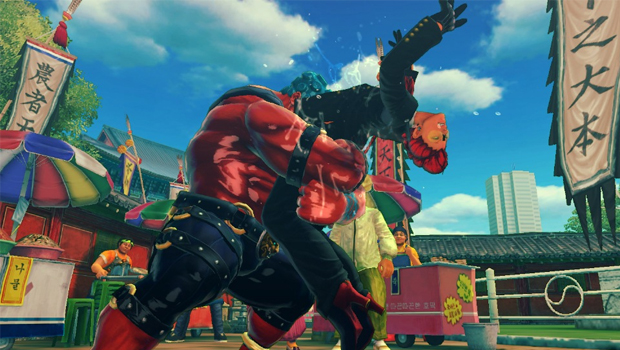
What is it: One of the ways that newer fighting games continuously one-up each other is through super moves. The flashier ones are nice, but some veer dangerously close to straight-up cinematic territory, where both fighters take a breath while someone gets viciously mauled onscreen. Whats worse is when youre new to a game, and youre not even sure whats happening; all you can do is flail maniacally on the controls in the hopes of avoiding the inevitable damage coming your way.
Weekly digests, tales from the communities you love, and more
Why we love it: Variety is the spice of life, and unleashing super attacks that convey Dragon Ball Z levels of raging fury is the perfect pace break in a particularly intense match. Plus, knocking someone out with the last hit of a super usually justifies leaping to your feet and doing a humiliating victory dance on your poor opponent. And without long super moves, off-the-wall characters like Demitri, Hakan, and Captain Commando might be far less interesting.
Bizarre backdrops
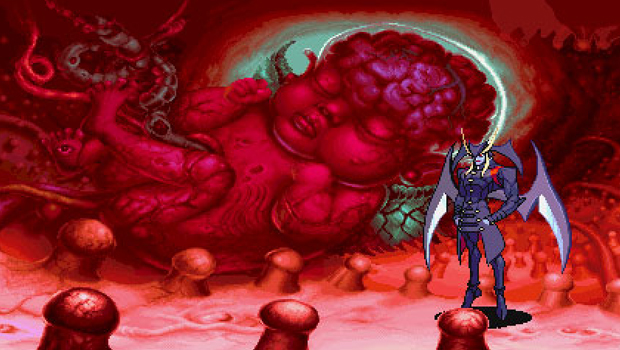
What is it: Mortal Kombats severed-head-filled Pit Bottom and Marvel vs. Capcom 2s creepy clown carnival are close contenders for the weirdness crown, but none have topped the most disturbing of Darkstalkers backdrops: a giant womb containing an enormous, twitching demon fetus. Even the real-world settings from Street Fighter and King of Fighters occasionally take a turn for the strange--an elephant atrium or a cruise ship populated by over-eager obese women seem like odd places for a fight to break out.
Why we love it: No matter how freaky or implausible these backgrounds might be, fighters would be far less enthralling without lively extras and eye-catching settings behind their brawls. You can glean a lot about the personality of an individual fighter or the atmosphere of a game based solely on backdrops, and giving spectators plenty to look at during a standoff is a plus.
Charge / mash moves

What is it: Here are two sides of the ease-of-use spectrum. On the one end, you have charge characters, who must constantly be holding down-back if that want a sliver of hope at winning. They need to balance their offense with a heaping helping of turtle-like defense, so that that can bust out a Sonic Boom at the opportune moment. On the other end are mashing moves, the button pounders bread-and-butter attack. Slam away at the buttons, and youll electrocute, hundred-hand slap, or kick the living daylights out of your opponents--no difficult inputs necessary!
Why we love it: If every move were activated via quarter-circle motion, none of the fighters would play all that differently. Having characters like Guile and Blanka balances out the straightforward nature of Ryu and Ken, ensuring that any player can find the character that feels comfortable to control. Plus, its just so darn satisfying to catch the opponent by surprise with a split-millisecond-timed charge move, or mash away on a punch button and watch a simply shocking attack come out.
Palette swaps
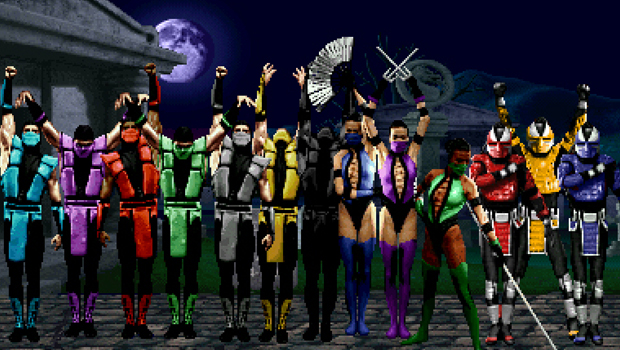
What is it: Besides providing what feels like a third of Mortal Kombats cast, palette swaps are an easy way to add a smidgen of variety to your fighting game. From a practical standpoint, it makes sense--when two people pick the same character, you wouldnt want to lose in the confusion of figuring out which doppelganger youre controlling. But frankly, some of the trendy color palettes make no sense. Why does every Guilty Gear character have a bright pink get-up in their closet? Why does a costume change often result in an entirely different skin pigment? Why do our customized clothing creations in Capcom vs. SNK 2 always look horrendous?
Why we love it: Having a rainbow of colored costumes to choose from triggers a sense of ownership. Once you build a reputation with your select colorway, it starts to feel like that fighters look belongs to you. BananaKens yellow Ken Masters, MikeZs lime green Iron Tager, DJ Houshens orange Marvel team--each has become an emblematic icon of the person playing. Who wouldnt want that kind of recognition based on color palettes alone? That, and they're an excellent way for developers to make obscure references.
Racial stereotyping thats mostly harmless?
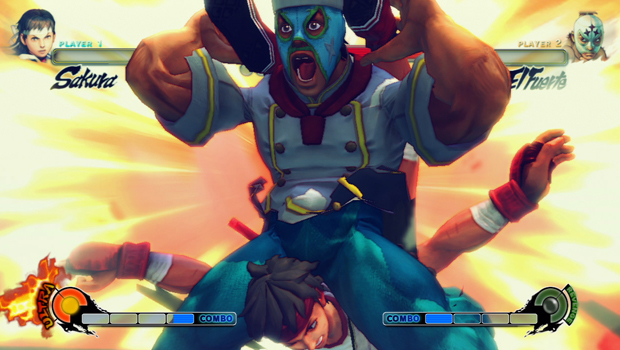
What is it: No matter your nationality, theres a fair chance that your people have been reduced to a stereotype in a fighting game at some point. Maybe theres something getting lost in translation: Much of these stereotypes are born from Japanese companies creating American characters, and vice versa. But if fighting games are to be believed, then every African American has a wide-toothed grin, every Native American is one with nature, every Japanese person is either stoic or pervy, and every WASP is a brazen idiot. And dont even get us started on the names for El Fuertes moveset, which include Habanero Dash, Quesadilla Bomb, and Guacamole Leg Throw.
Why we love it: As with many kung fu movies, theres something goofily charming about seeing over-exaggerated tropes done with complete seriousness. Most of these stereotypical fighters are so absurdly off base that its hard to hold them in contempt, and theyre usually a product of uninspired designers instead of malicious intent. With a few exceptions (like the entire cast of Tattoo Assassins), these silly typecasts are largely inoffensive. And really--Balrog pretty much is Mike Tyson, if were being frank.
Repeat contenders in fatal fighting tournaments

What is it: If our calculations are correct, weve ripped Johnny Cages spine clean off his skeleton at least 548 times throughout Mortal Kombats long history. So how the heck does he keep showing up in subsequent games? Like comic books and soap operas, everlasting death seems to be something that fighting game characters can avert at will, no matter how graphically or brutally theyre murdered in front of your very eyes. Are they being continuously reborn? Are all fighting game fatalities just concussion-induced hallucinations? Is there a laboratory somewhere thats filled with wall-to-wall Johnny Cage clones?
Why we love it: The truth is, none of those explanations matter. Killing off beloved scrappers just because they lost a single fight would be stupid--you wouldnt have any time to develop loyalty to your favorite fighter from game to game, and thered be far fewer iconic characters. Were happy to suspend our disbelief if it means continuously reuniting with our preferred brotastic bruiser.
A final boss designed just to drain your quarters

What is it: If you played any fighting game during your childhood, youve probably been driven to tears by the frustration of trying to best the last boss. M. Bison, Shao Kahn, Gill--theyre all heartless bastards, programmed with a specific directive to torment you with the cheapest, cheesiest moves on earth. Inhuman reaction speeds and beefy damage? A barrage of unblockable attacks and taunting laughter? Straight-up resurrection from a knock-out? These final bosses have every life-ruining, overpowered ability you can think of, and make the credits to your favorite fighting game feel unattainable at times.
Why we love it: Seething hatred can be a powerful motivator, and when you do finally put these oppressive jerkfaces in their place, youll feel the euphoria of your stress melting away. Once youve mastered your fighting game of choice, you might reach a level where even the imbalanced final boss cant hold a candle to your fearsome prowess. Whos the boss now, huh? WHOS THE BOSS NOW!?
Shotokans as far as the eye can see
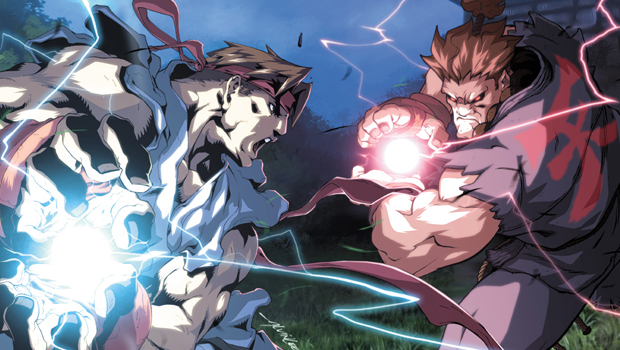
What is it: If youve seen one, youve pretty much seen them all. Ryu, Ken, Akuma, Gouken, Sakura, Athena, Ryo--all of their fighting styles revolve around fireballs and shoryukens. This trend seems to have reached critical mass as of late; for instance, one-fifth of Super Street Fighter IV Arcade Editions roster is composed of Shotos. How many times can we bust out a down/down-toward/toward/punch fireball motion before we lose our god dang minds?
Why we love it: Turns out, well never get sick of these moves. Fireballs and dragon punches are such iconic devices in the fighting game playbook; they serve such clear ranged and anti-air purposes that anyone can grasp when to best use them. Plus, its each Shotos small difference--like Akumas air fireballs or Seans overhead leg drop--that give each one their own unique flair.
A barebones story
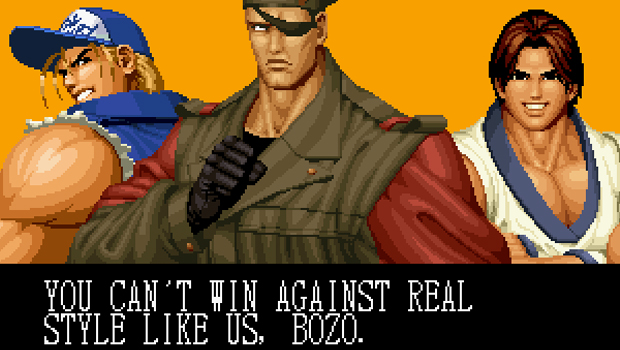
What is it: Granted, some fighters buck this trend by delivering a fully fleshed-out single-player campaign; Mortal Kombat and Persona 4 Arena are recent examples. But most fighting games bury their plotlines deep within win quotes, fragmented cutscenes, and rarely mentioned hints. To discover the lore behind your favorite fighter or the tournament theyve entered, youll have to do some serious research or play every game theyve ever been in.
Why we love it: When it comes down to it, the story in fighting games is secondary. The true action and excitement happens in Versus mode, where grand plots, rivalries, and camaraderie develop between two human contenders. Its nifty to know the complex history of loners like Necro or Iori, but its not necessary info for those looking to master their moves. The interesting backstories are there if you want them--but the true drama happens outside the game.
If you've punched one, you've punched them all
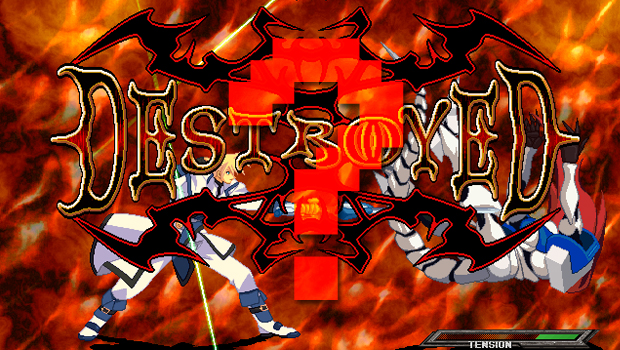
Those are the cliches we've clung to throughout years of fighting game fandom. Which repetitive fighter cliches do you hold near and dear to your heart? Let us know in the comments straightaway--no need to quarter up.
For more fighting game goodness, check out gaming's most ridiculous alternate fighting costumes and 29 obscure fighters that deserve HD remakes.
Lucas Sullivan is the former US Managing Editor of GamesRadar+. Lucas spent seven years working for GR, starting as an Associate Editor in 2012 before climbing the ranks. He left us in 2019 to pursue a career path on the other side of the fence, joining 2K Games as a Global Content Manager. Lucas doesn't get to write about games like Borderlands and Mafia anymore, but he does get to help make and market them.



